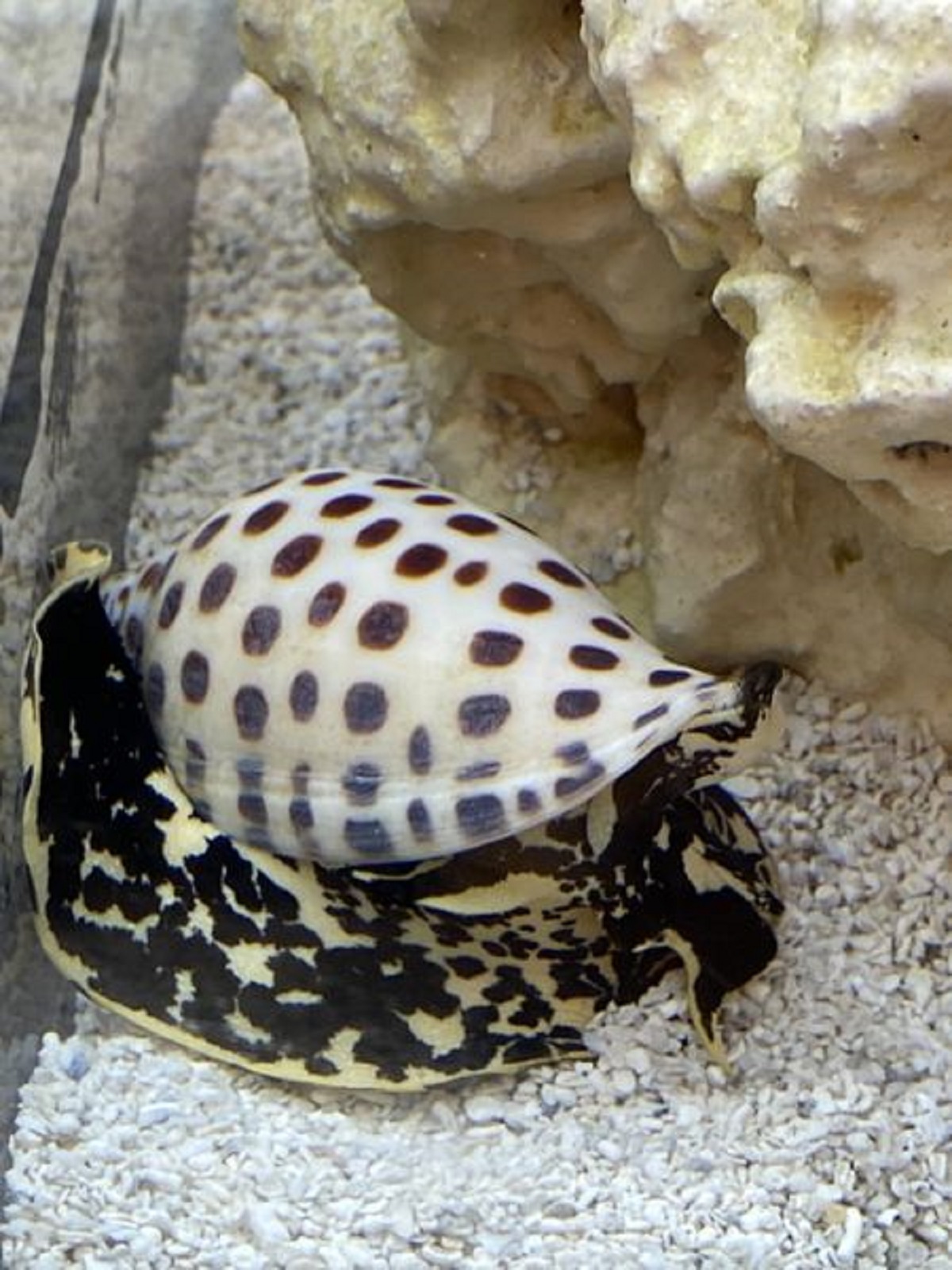
Photo from the Bailey-Matthews National Shell Museum
From the Bailey-Matthews National Shell Museum:
The rare coveted junonia is treasured by seashell hunters who visit to seek the ocean’s treasures. They know all too well the thrill of finding a junonia shell because the spotted shells rarely make it to shore intact.
And seeing a live junonia was next to impossible – until recently.
Two and half years ago, Bailey-Matthews National Shell Museum marine biologist Rebecca Mensch sailed on a research expedition to locate live junonias and bring them back to the museum for study and care. Very little is known about the elusive species, and she and the museum team resolved to begin unraveling the mysteries of the mollusk that has become a cultural icon for the islands.
“We can’t protect what we don’t understand,” Mensch said. “There are more unknowns about junonias than knowns, and we want to change that. The ocean is changing rapidly due to climate change, acidification, pollution and other threats. This species is so culturally important to Sanibel. If we don’t understand what it needs to have a healthy and stable population, we can’t effectively advocate on its behalf.”
The museum is the only place in the world providing care for and studying the species of sea snail. Other than in the ocean itself, the museum is the only place where people can watch the soft, brightly colored live junonias inch along carrying their exquisite shells.
Mensch shared what she and her team have learned and uncovered about the species.
Q: What do junonias eat, and how did you discover their preferred meal?
A: Junonias typically “dine” on other gastropods, particularly lettered olives. We were able to find a single scientific journal article published about live junonias in the 1970s. It was only two pages long, but the authors wrote that they had seen junonias successfully feed on lettered olives and a few other gastropods.
Q: What is one of the most unexpected discoveries you have made so far about junonia?
A: Their feeding style. Dr. Jos Leal, the museum’s science director and curator, and I published a short paper about this in 2019 based on a video I recorded of a junonia striking a lettered olive. After the lettered olive was touched by the junonia’s mouth, the lettered olive very suddenly pulled inside its shell and was unresponsive for about 15 minutes, after which it suddenly seemed to “wake up” and resume normal behavior. This has raised several new questions about the junonia’s salivary glands and digestion, which we are hoping to investigate in the future.
Q: How old were the junonias when you brought them to the museum?
A: We do not know. No one has published any research about the lifespan or growth of junonias, so we have no way of even estimating how old they were when we got them. When we got them, they were both about 8 centimeters long, and have grown a small amount since then. Junonia shells found on the beach are typically between 3 centimeters to 12 centimeters.
Q: What is their anticipated life expectancy?
A: Again, we have no idea. Currently, we do not even know the lifespan of our common local lightning whelk or horse conch, so it is not surprising we have no idea how long junonias live. Mollusks are such important animals in ecosystems around the world, and we know shockingly little about most of them. There is still so much left about our world to learn and explore.
Q: If there was one thing you wish people knew about junonias, what would it be?
A: That they aren’t just a pretty shell. The animal’s soft body parts are also beautiful and intriguing. In my opinion, they have an adorable “face” with two long tentacles that make it look like it has a mustache. Many people simply admire the dead animal’s shell without stopping to think about the animal that grew that shell and the life it lived before it died.
Q: What is one of the mysteries about junonias you are most inspired to solve?
A: Reproduction! No one has ever described the eggs or juveniles of this species, or the act of mating. The protoconch (the first, or earliest, embryonic or larval shell) visible on adults indicates it probably has a relatively large shell when it hatches, but that is yet to be confirmed. During the next research cruise, I would like to find a fairly large female junonia in hopes it will breed with at least one of the two large males we already have.


